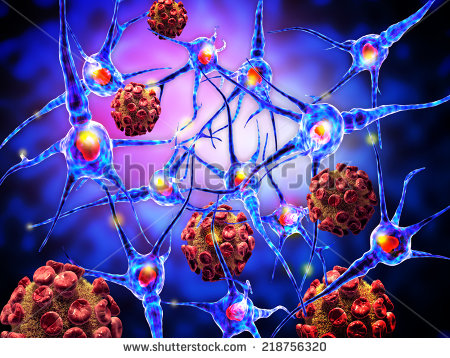Just a couple of cells in a dangerous tumor can split away and spread to different parts of the body, however the bend along the edge of the tumor may assume a huge part in enacting these tumor-seeding cells, as indicated by another University of Illinois study.
Utilizing built tissue situations as a part of different shapes and examples, the investigation of skin malignancy found that the more bended the cell societies were, the more disease cells at the edges showed markers of undifferentiated cell attributes - the way to spreading to different tissues. This has potential for assisting our comprehension of malignancy and creating customized treatment arranges.
Driven by Kristopher Kilian, a teacher of materials science and designing, and Timothy Fan, an educator of veterinary medication, the analysts distributed their discoveries in the diary Nature Materials.
"The most hazardous piece of growth is metastasis," Kilian said. "A few cells that we call growth undeveloped cells receive dangerous attributes where they can make a trip through the circulation system to other tissue and shape new tumors. There's a requirement for approaches to discover these cells and to study them, and significantly, to create drugs that objective them, in light of the fact that these malignancy undifferentiated organisms are impervious to chemotherapy medicates that objective the principle tumor. This causes repeat: The tumor returns."
Kilian's gathering spends significant time in tissue designing to make models of tumors, to all the more precisely study malignancy forms in a society dish. In the new study, the scientists refined mouse skin-malignancy provinces on different 2-D and 3-D situations of various shapes and examples to check whether the tumor shape adds to enactment of disease foundational microorganisms, and to see where in the tumor the undifferentiated organisms showed up.
They found that disease immature microorganisms appeared to show up in the most elevated numbers along the edges of the built tumor situations, especially where there were corners and raised bends.
"It was entirely amazing," Kilian said. "Typical undeveloped cells favor a delicate, squishy, interior position. So for malignancy, everybody had accepted that the growth immature microorganisms were amidst the tumor. We found that geometric requirements, similar to you would have where a tumor touches sound tissue, appear to enact these malignancy undeveloped cells at the border."
The scientists did various tests in their designed surroundings to affirm tumor-spreading capacity, for example, hereditary examination. They likewise tried other malignancy lines - human cervical, lung and prostate growths - and found that they reacted to the designed tumor situations similarly.
At that point Kilian's gathering collaborated with Fan's gathering to test the skin-malignancy immature microorganisms in live mice, and found that the phones taken from the designed situations were a great deal more prone to bring about tumors than cells taken from a traditional level dish.
"We found that numerous more mice created tumors when given the cells that we had designed to have these immature microorganism qualities, and they had a much higher frequency of metastasis in the lungs," Kilian said. "In a tumor, also, districts that build up these sorts of shapes may initiate cells that can then escape and frame more tumors. This may permit specialists to take a gander at the edge of a developing tumor and utilize the shape to direct their evaluation of which areas could be more risky - where they have to take out more tissue around the tumor and where they will not have to take as much."
Kilian trusts that the designed, built tissue situations will give specialists another approach to discover and culture malignancy immature microorganisms, which have been exceptionally subtle in ordinary societies - under 1 percent of cells, he said. Past the central art of finding and comprehension these growth spreading cells, he additionally sees built tumor situations as having helpful applications in customized solution.
"You can envision a patient has a specific tumor. You could build that in a dish, and utilizing the patient's own particular cells, you could build up a model of their particular tumor to try out medications," he said. "In the event that you could take a patient's cells and inside days have microtumors that you could use to screen all the accessible medications, then an oncologist would have the capacity to endorse a treatment that is perfectly customized for the patient that objectives both the tumor cells and these tricky malignancy undeveloped cells that as of now we can't see.
"There's significantly more work to be done, however we're exceptionally amped up for how an extremely straightforward materials property of a developing tumor may be an offender of the malady spreading. We think it opens up another street of examination for medication improvement, controlling surgery, and comprehension movement and spreading of tumor," Kilian said. "Malignancy is extremely unpredictable, so placing it in setting is critical. On the off chance that there is a microenvironment that gives the connection to enacting cells that can spread growth, then that is critical to know."







.jpg)


